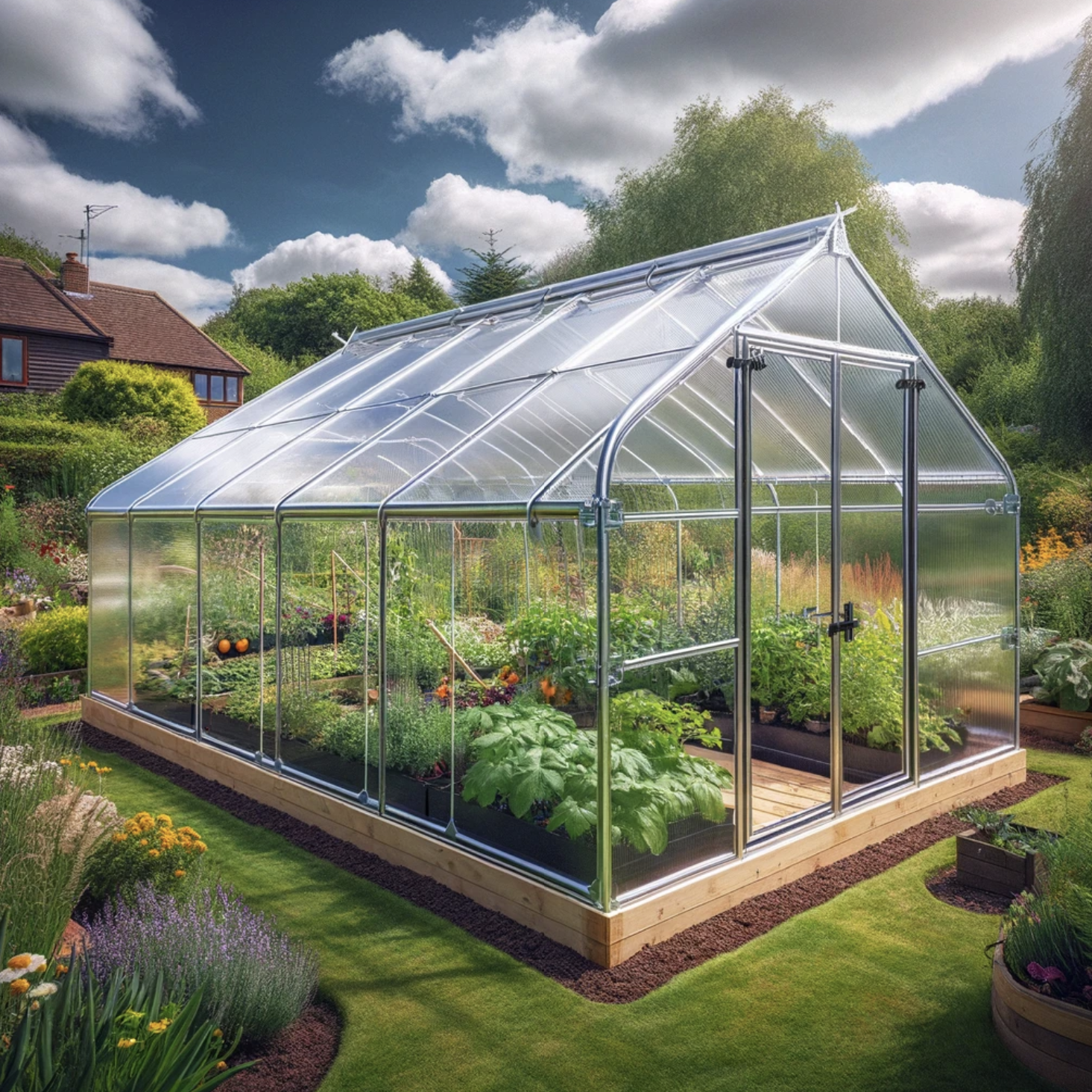In the UK, where weather can be unpredictable and often harsh, a polycarbonate polytunnel is an excellent solution for gardeners. These structures extend the growing season by creating a more controlled environment and protect your plants from strong winds, heavy rain, and frost.
Ideal for both hobbyists and professional gardeners, polytunnels made from polycarbonate sheets are robust, resist UV rays, and are more durable than those made with polyethylene covers. Here's how to build a polytunnel with polycarbonate sheets.
Benefits of Building a DIY Polycarbonate Polytunnel in the UK
Taking on this at-home project has several advantages, including:
- Cost savings: Building your polytunnel is significantly more cost-effective than hiring professionals. By choosing to DIY, you can substantially reduce expenses.
- Customisation: Tailor the polytunnel to fit your garden's unique space. For a distinctive look and added UV protection, consider using bronze polycarbonate sheets, which blend functionality with style.
- Skill development: Constructing a polytunnel will enhance your DIY skills, which you can transfer to other home and garden projects.
- Satisfaction and aesthetics: Crafting a polycarbonate greenhouse from start to finish adds functionality and enhances your garden's visual appeal, giving you a sense of pride in your accomplishment.
💡 Key Takeaway: Constructing a DIY polycarbonate polytunnel in the UK not only saves you money but also allows for a high degree of customisation, skill development, personal satisfaction, and garden beautification. 🌱🛠️
How to Build a Polytunnel With Polycarbonate Sheets
Now that we have established the benefits let's explore how to build a DIY polytunnel in your backyard using polycarbonate sheets.
Gather the Essential Components
Selecting the right components is crucial for constructing a weather-resistant polytunnel. Opt for 10 mm polycarbonate sheets, which are thick enough to provide insulation and durability and are ideal for the UK climate. Key materials include:
- Weather-resistant polycarbonate sheets that can withstand heavy rain, snow, and UV rays
- Clear H sections and fixing buttons to secure the sheets and provide stability
- Clear C sections to seal open edges, preventing moisture and debris buildup
- Twinwall polycarbonate sheets: Multiwall or twinwall polycarbonate sheets provide insulation and strength against the elements.
💡Tip: To save on materials, measure the frame dimensions before purchasing and consider any unique weather challenges in your area, like high winds or heavy snow.
Calculate the Number of Sheets You Need
Accurately calculating the number of sheets needed helps avoid waste and manage costs. Learn how to cut polycarbonate sheets effectively for custom fits.
Follow these steps:
- Measure your polytunnel frame to determine the length and width of each section.
- Consider standard sheet sizes available in the UK to simplify calculations.
- Include extra sheets for ends and custom cuts to cover non-standard dimensions.
Example:
|
Description |
Measurement |
|
Length of Polytunnel |
10m |
|
Width of a Single Sheet |
1m |
|
Number of Sheets for Length (rounded up) |
10 |
|
Sheets for Tunnel Ends |
2 |
|
Extra Sheets for Custom Cuts |
1 (for safety) |
|
Total Sheets Required |
13 |
This table shows a simple example of calculating polycarbonate sheets for a 10-metre polytunnel. It uses a 1-metre sheet width plus an extra sheet for custom cuts and two for the tunnel ends, ensuring sufficient material for the entire project.
💡Tip: After calculating, add 10% to your order for unexpected adjustments or replacements. This ensures your polytunnel remains sealed and weatherproof.
Secure the Polytunnel With H Sections and Fixing Buttons
Properly securing your sheets is crucial, especially in windy conditions. Use H sections to join sheets and fix buttons to hold them in place along the frame.
- H Sections join two sheets securely, minimising gaps and reducing wind exposure.
- Fixing buttons hold sheets firmly to the frame, securing them against strong winds.
- Placement should be even along the edges, with extra buttons in high-pressure areas.
💡Tip: For added stability, place extra fixing buttons along the top and bottom of each sheet, as these areas are most vulnerable to wind uplift.
Extend Longevity With Clear C Sections
Clear C Sections provide a protective barrier, sealing polycarbonate sheet edges to prevent algae, mould, and moisture from infiltrating.
- Sealing the edges with C Sections blocks moisture and dirt from entering.
- Algae and dirt buildup prevention keeps the edges clean, reducing maintenance needs.
- Improves structural integrity by protecting sheets against UK climate conditions.
💡Tip: To improve sealing, add a small line of silicone along the inside of the C Sections before fitting them onto the edges. This creates a tighter seal and keeps moisture out.
Select the Right Sealant
A reliable sealant is essential for joining sheets and securing them to the frame. Choose a sealant compatible with polycarbonate to prevent degradation over time. Look for and incorporate:
- Polycarbonate-compatible sealant designed to protect sheets from wear.
- Weather-resistant properties to prevent water and temperature-related damage.
- Application techniques that create a smooth, watertight seal.
💡Tip: Avoid over-applying sealant, as excessive buildup can crack or peel. Apply only as needed for an effective seal.
Additional Considerations for UK Polytunnels
Building a robust polytunnel requires choosing materials suited for structural support. Treated timber, HDPE pipes, and concrete anchors add durability to your structure.
- Treated timber that resists rot and moisture suits the UK’s wet climate.
- HDPE pipes for frames offer strength and flexibility in harsh weather.
- Concrete anchors secure the frame, providing stability in high-wind areas.
- Glazing bars: Glazing bars are essential for connecting and reinforcing polycarbonate sheets, maintaining a snug, secure fit.
💡Tip: Consult local gardening or DIY stores for region-specific recommendations on structural materials that best withstand your local climate.
Frequently Asked Questions
Which is better, polytunnel or polycarbonate?
Polycarbonate offers superior durability, UV protection, and insulation compared to traditional polytunnel covers. Still, polytunnels are often more cost-effective and more accessible to set up.
What is a major disadvantage of polycarbonate sheets?
A major disadvantage of polycarbonate sheets is their susceptibility to scratches, which can impact their clarity and longevity if not handled carefully.
What is the best material for a polytunnel?
Polycarbonate sheets are considered the best material for polytunnels because of their durability and light transmission, especially in climates with extreme weather conditions.
What thickness polycarbonate is best for a greenhouse?
A 6 mm to 10 mm thickness is ideal for greenhouse polycarbonate, balancing insulation with light transmission and durability.

